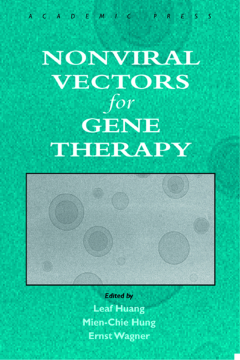
Additional Information
Book Details
Abstract
Gene transfer within humans has been an obstacle until about 10 years ago. At that time, it was found that viral vectors were effective carriers of "healthy genes" into patients' cells. The problem, however, was that viral vectors proved unnecessarily harmful to humans: subjects experienced inflamatory activity and negative immunological responses to the genes. Viral vectors were also unable to meet the needs of the pharmaceutical community: they were not reproducible in large-scale proportions in cost-effective ways.
Thus, research was undertaken to find a safer way to transfer genes to patients without jeopardizing the safety of the patient. And so non-viral vectors were discovered. This volume presents the various non-viral vectors currently under development. Although not methodologically oriented, it will provide the necessary details behind the development of the vectors. This information will prove useful to both researchers and clinicians.
Key Features
* Presents state-of-the art developments of nonviral vectors as tools for modern molecular medicine
* Covers all types of nonviral vectors, from molecular structure to therapeutic application
Provides a comprehensive review of synthetic vectors
* Includes contributions from major investigators and leading experts in the field
"...Chapters are written by leading experts and recognized authorities in the field, and the editors have done a remarkable job of ensuring that the level of presentation remains constant throughout ... The book is well illustrated, and includes several pages of color plates and a functional index...this volume is a succinct, readable introduction to the development and use of nonviral vectors in gene therapy, and should serve to stimulate further research into this field. Its appeal, however, is not limited to those working in gene therapy. It should also be read by molecular biologists and especially cell biologists, whose work on basic cellular mechanisms of uptake and transport are needed to further an understanding of how to design effective vectors for gene therapy."
- Doody's Publishing Reviews
